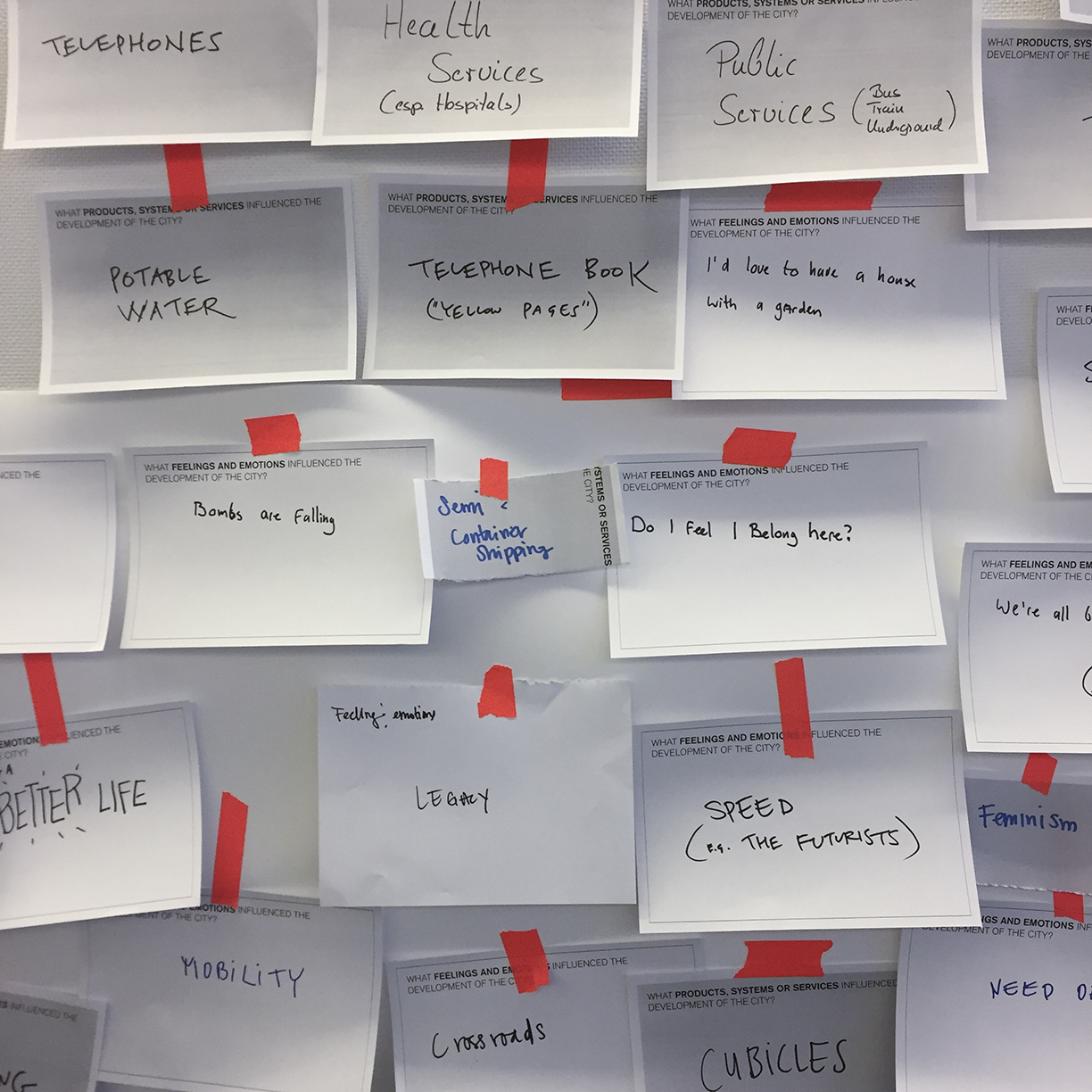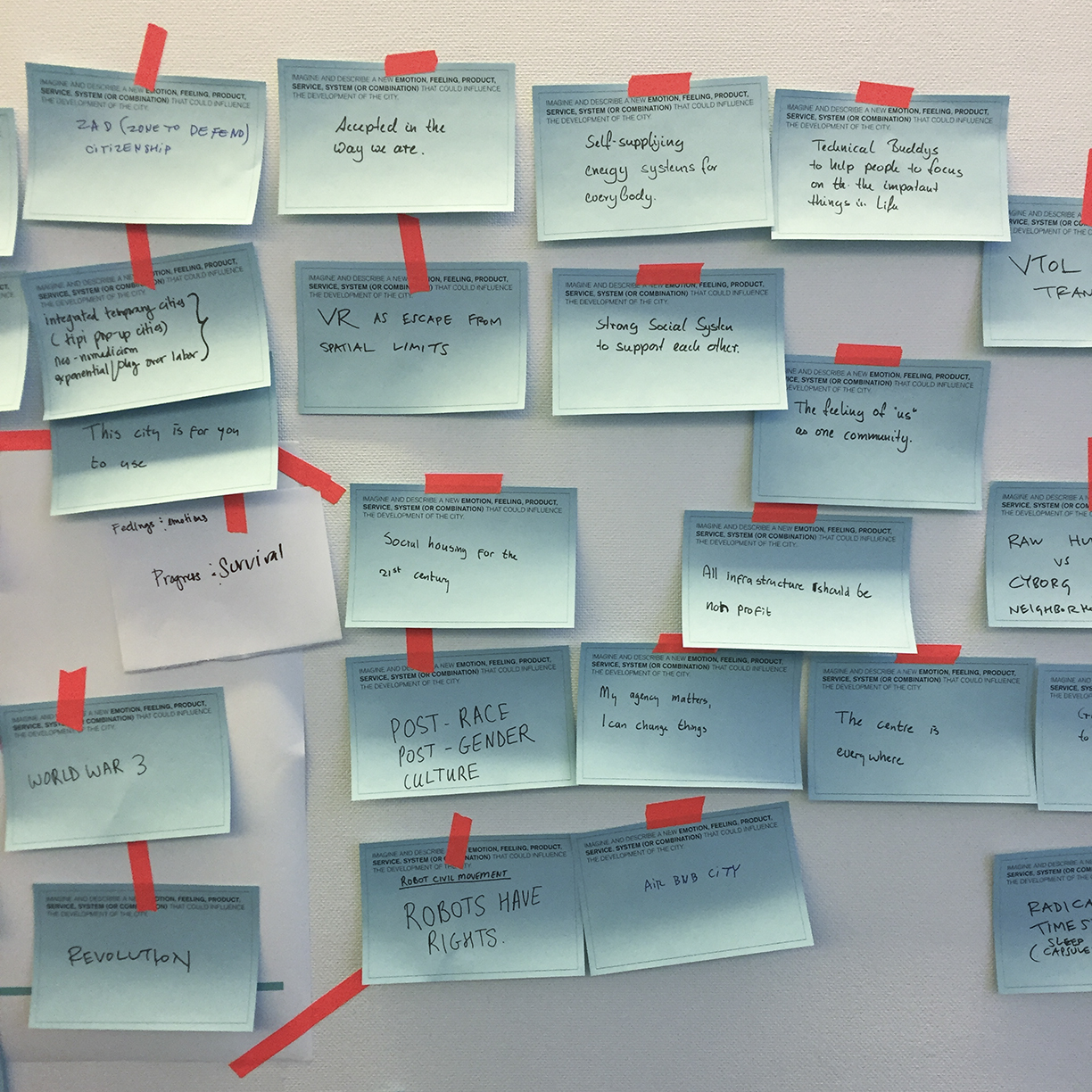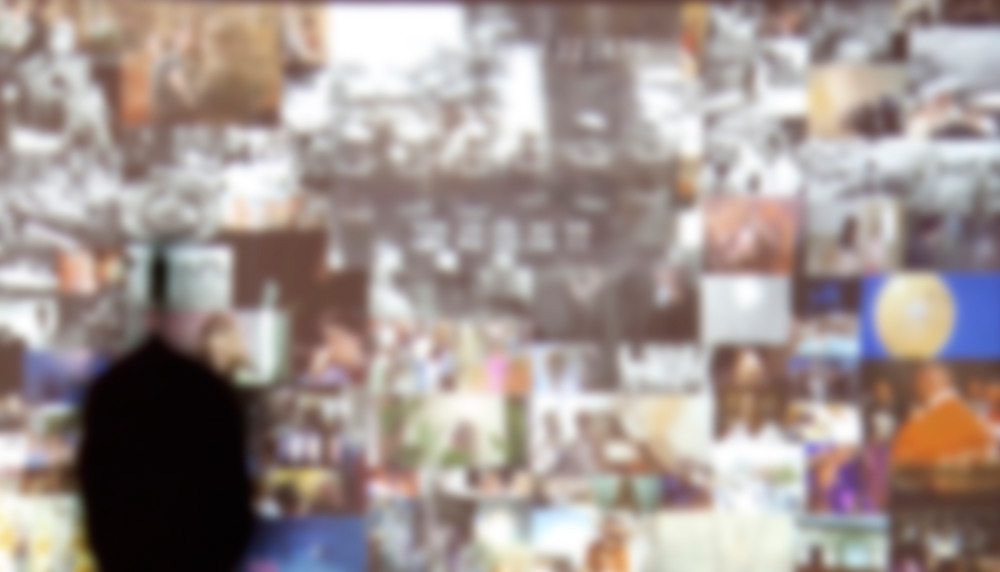City of Experiences
As we enter the 21st century, the experience of life in the contemporary has surpassed the classic development models of the 20th century. We are living in the 50/50 (some might say 70/30), a fluid presence between the virtual and physical worlds. This is shaping alternative modes for how we exist, providing us with the potential to manage and create multiple realities and stories which influence how we want to be seen and understood. But how do we in turn adapt and understand ideologies, structures and systems in this new way of living, modifying the definition of cities to encompass the experiences of the invisible cities that extend beyond physical infrastructure?
At the 2018 IXDA Education Summit in Lyon France, DoUC Managing Partner Christopher Pandolfi and collaborator Rob Giusti from the Institute without Boundaries presented a creative, collaborative workshop that leveraged UX methodologies to identify contradictions of the past that could become leading ideas of the future. The aim of the workshop was to explore and experiment with the proposal of city building through experience design, imagining the experiences of the city first and then building the physical and digital city up from those experiences.
The process began with a collaborative timelining exercise, asking participants to think about the last 118 years and what different emotions, desires and feelings helped to influence and shape the development of the city. What began to emerge was that certain emotions tend to be tied to personal stories or personal experiences, while others are attached to larger narratives that participants are not necessarily directly involved with. These emotions experienced at the personal level have created new layers of interactions in urban spaces that are often completely overlooked by planning processes because of a lack of the tools necessary to design policies that better incorporate them. As the digital landscape evolves, humans have more frequent opportunities to interact with interfaces as they navigate the city and its experiences, creating a series of micro-interactions that occur across and throughout urban spaces. The intention of creating policy that integrates and embraces these new layers of interactions is not to enforce micro-regulation of micro-interactions, but instead to treat the city as a space of greater potential to support and facilitate new people-to-people and people-to-object interactions. Encouraging this new way of approaching interaction, policy and city building has the potential to develop more adaptive service delivery and relationships within the city in the future.
The second phase of the workshop then asked participants to map different products, services and systems that have influenced the development of the city over the same time period, visualizing the complexity and multi-scale relationships of how these different products, systems and services work together to help shape our cities. The process of overlaying experiential emotions and feelings with products, systems and services brought into focus the relationships—both new and known—through the specific lens of city building, allowing us to speculate in new futures and alternate storylines of the past.

In the final phase of the workshop, participants each created either a new emotion/experience or a new product, system or service for the future. Using the timeline as a visual exercise to assist in this creation, participants could choose a trajectory of history or create a new path as they saw fit. In cases where participants came up with ideas that involved new types of digital technology, the ideas were not so far-fetched as to be improbable, and spoke more about how our social frameworks and processes for design will become more important than the explicit products, systems and services.

The underlying goal for the City of Experiences project is to continue questioning how cities are constructed and who they are constructed for. The popular discussion and ideas around the smart city and tech-utopias are not new, although maybe the technology used to drive them is. What is needed now, as a society, is to stop waiting for the acceleration of technology to determine how we will live, and instead be active in creating the necessary platforms for society to imagine what experiences they see in their lives as a driving force for design. The City of Experiences is a project that through different experiments and engagements will continue to explore this hypothesis.


